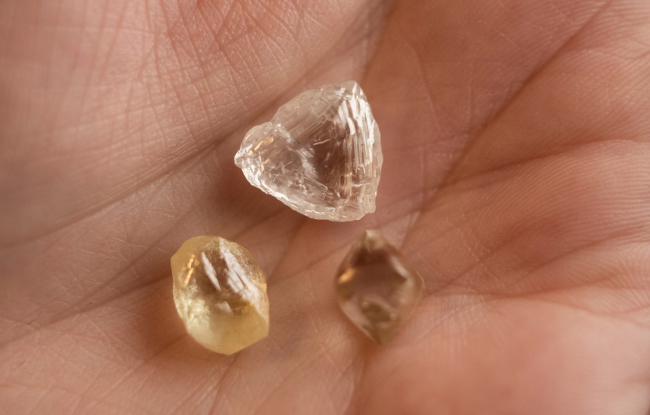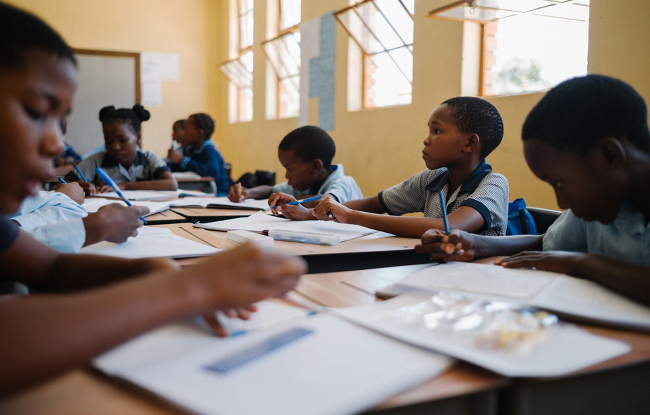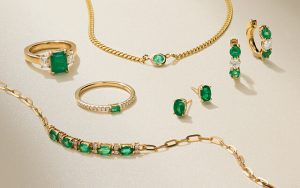Ethical and Sustainable Botswana Diamonds in Ten/Ten Collection

Made possible through the support of De Beers Group, Blue Nile is thrilled to feature the Ten/Ten capsule collection. These limited-edition pieces hail from ten of the most distinctive designers working today.
De Beers invited these designers to re-envision the engagement ring with ethically and sustainably sourced natural diamonds from Botswana’s world-famous mines—and the Ten/Ten capsule collection is the gorgeous result.
While we’re keeping the exact details of the ten extraordinary rings under wraps until the launch of the collection in January 2021, we’re excited to introduce you to the designers and to dive into the backstory of the beautiful diamonds used in their creation.

“As a person of African heritage, I love the idea of helping people from a country where diamonds have contributed to a culture and set up its people.”
—Lauren Harwell Godfrey


DEBSWANA: A SUSTAINABLE AND ETHICAL PARTNERSHIP BETWEEN BOTSWANA AND DE BEERS GROUP FOUNDED IN 1968
In 1968 a partnership between Botswana and De Beers Group created Debswana, a jointly owned diamond company with a bold reinvestment initiative built on the success of both parties. The seeds of this partnership were born a year earlier with the discovery of the Orapa Kimberlite volcanic pipe. Ancient volcanic pipes like Orapa are rare and a great source of diamonds. Its development into the world’s first sustainable diamond mine has been an economic gamechanger for Botswana.
Debswana is now one of the top two producers of diamonds in the world and through wise stewardship of its diamond revenues, Botswana has become a strong upper-middle economy.


“As a person of Nigerian descent, one of the most gratifying aspects of being involved with this project is being able to shine a light on the economic liberation story of the DeBeers Group partnership with Botswana.”
—Lola Oladunjoye
FIVE WAYS THE DIAMOND TRADE IN BOTSWANA BENEFITS THE COMMUNITY
Botswana today has a thriving industrial economy, with diamonds contributing as much as one-third of the country’s Gross Domestic Product (GDP). Eighty percent of every dollar of profit from the diamond trade stays in Botswana. As a result, the quality of life in Botswana was transformed and a solid middle class emerged.
Every child receives free schooling to the age of 13
Secondary education is funded 95% by the government. Increased public spending has shored up a dynamic infrastructure around energy, water and transportation.
Botswana now has 7,000 kilometers of tarred roads
The country has 7,000 kilometers of tarred roads, compared with less than 5 kilometers in 1966.
One in 20 jobs can be attributed to the 50/50 partnership
Additionally, more than half a million hours were dedicated to industry training.
New Spending Patterns Emerge
The shifting economic base has also meant an influx of foreign visitors, creating demand for hotels and other service-sector businesses. So while the diamond operations have directly added many thousands of positions, many more are indirectly supported by new spending patterns.
More Job Opportunities for Botswanans
As part of its commitment to mine-based economies, De Beers aims to keep as many diamond jobs as possible—from sorting and cutting to polishing—in the countries where the stones are found.
To learn more, watch the 15-minute documentary produced by Eco-Age called “The Diamonds of Botswana“

ONE HUNDRED PERCENT OF DE BEERS DIAMONDS ARE CONFLICT FREE
As the leader of best practices for the diamond industry, De Beers Group and other industry leaders formed the World Diamond Council in 2000. The main achievement of this council resulted in the 2003 Kimberley Process Certification Scheme—a now common practice tracing a stone’s origin and certifying it as conflict-free.
Ready to get inspired? Meet the designers of the TEN/TEN collection featuring diamonds from the heart of Africa.







